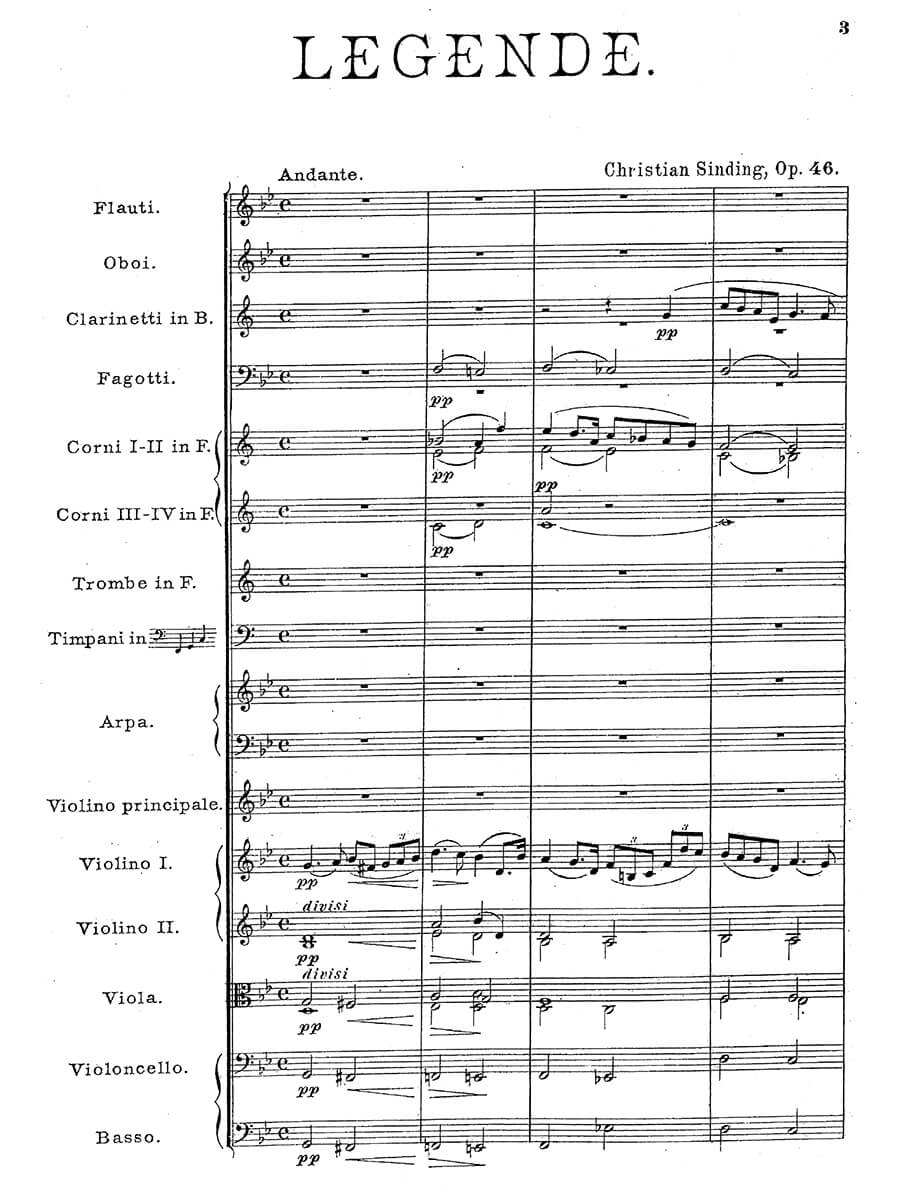Legende Op.46 for violin and orchestra
Sinding, Christian
18,00 €
Christian Sinding – Legend for violin and orchestra op. 46
(b. Kongsberg, 11. January 1856 – d. Oslo, 3. December 1941)
Preface
„In short: Grieg’s art is lyrical with a preference for the idyll, while Sinding’s muse is epic, and at the same time heroic-ossian; this tone poet [Sinding] is the Norwegian Preller, the Nordic landscape master in modern music.“ In this sketch of character sketch of the composer, which Walter Niemann published in 1906 in his book Die Musik Skandinaviens, the two factors that decisively determined and ultimately inhibited the reception of the composer Christian Sinding are interwoven: In Niemann’s and many of his contemporaries’ eyes, the music of the “Nordic composer”, who was forty years old at the time, cannot be thought of otherwise than in connection with his Scandinavian origins; his musical associations are determined by myth and landscape – and it was precisely this that made the comparison with his popular compatriot Edvard Grieg inevitable, while he soon was considered the inferior. The popularity he had achieved early on, for example with the Piano Quintet in E Minor op. 5 (1888), the First Symphony in D Minor (UA 1880-1890, UA 1893) or the piano piece Frühlingsrauschen op. 32/3 (1896), one of the most popular piano pieces of the early 20th century worldwide, declined noticeably already during his lifetime. At the latest after the end of the Second World War, Sinding was forgotten outside Scandinavia – a loss for the modern concert repertoire that has been made increasingly aware by musicians and scholars in recent decades and remedied by performances, editions and research.
In Christian Sinding’s extensive oeuvre, which includes a large number of piano works and songs as well as four symphonies and the opera Der heilige Berg (1912), the works for and with solo violin occupy a special position because they are provided with a biographical note: During his school days in his home town of Kongsberg, Sinding received violin lessons from Gudbrand Bøhn (1839-1906), an important Norwegian violinist and instrumental teacher, who had premiered Edvard Grieg’s Violin Sonata op. 8 in 1867. In 1874 Sinding entered the Leipzig Conservatory, where he continued his violin studies with Henry Schradieck (1846-1918), deputy conductor of the Gewandhaus Orchestra, and studied composition with Salomon Jadassohn (1831-1902), a Liszt pupil. At that time, he abandoned his plans for a career as a professional violinist in favor of a career as a composer, although his compositional breakthrough came several years later, after his studies in Munich (1882-1884). Although the German press commented polemically, Sinding was first perceived as a serious composer through his Piano Quintet in E minor, op. 5, written in 1884. …
Read full preface / Komplettes Vorwort lesen > HERE
| Score No. | |
|---|---|
| Edition | |
| Genre | |
| Size | |
| Printing | |
| Pages |
